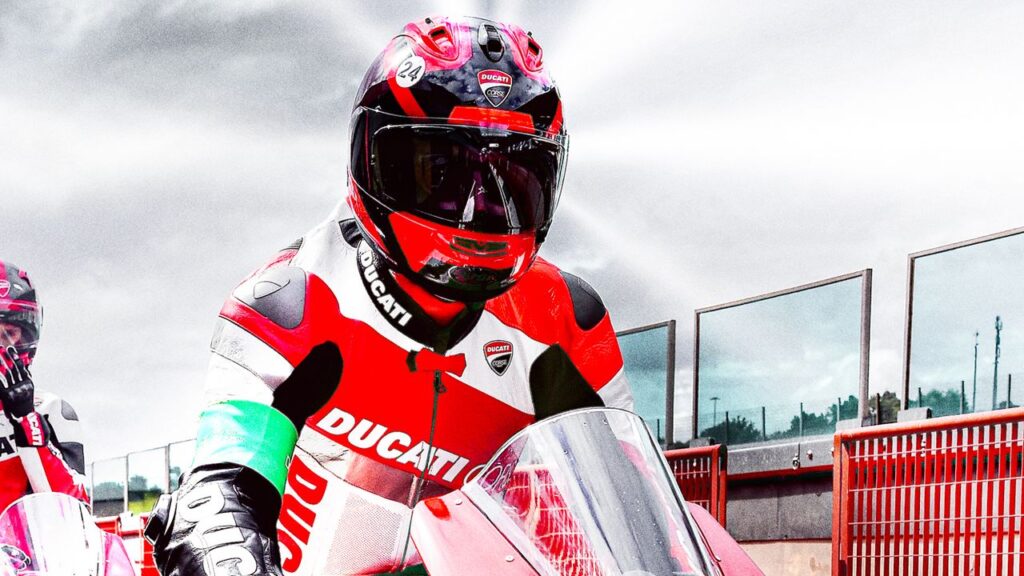A few weeks later, I joined a dozen or so Ducatisti in the gardens of the 12th-century Castello del Trebbio, just northwest of Florence, for a rousing dinner with some key members of Ducati Corse—the racing team, who had driven down from Ducati headquarters near Bologna—in the castle’s surrounding gardens. We had made our way there from all over the planet, and though most of these people were competitive, high-net worth types who owned many motorcycles, sometimes many rare motorcycles, we became fast friends thanks to our shared obsession.
The next day, aboard the new Ducati Multistrada V4—an adventure touring bike, not a racing bike, but plenty fast—we set out on a grand, scenic tour from Florence to San Gimignano, a 13th-century walled city built around a 12th-century church, and back. I spent much of the day happily chasing Jason Chinnock, the North American CEO of Ducati and an avid motorcycle tourer, through charming, small villages on tiny, twisting roads. Speed limits were ignored; lunch and other creature comforts were not.
Still, it was Mugello that remained our North Star throughout it all, and in our garage at the track the next morning, we stripped ourselves down to basics and pulled on our armor—one-piece, zip-up protective bodysuits made of perforated kangaroo leather (which offers a superior strength-to-weight ratio compared to cowhide) with reinforcements at the knees, shoulder, and elbows. Looking around, I got the sense I was the only one in a rental. (This being my first-ever track day, I was borrowing a Dainese suit in full Ducati Corse livery.)
If the vibes at dinner and on the Multistradas centered around a certain casual, chatty ease, though, the mood in the garage as we changed was serious, silent, almost brooding. There’s simply no getting around it: While riding motorcycles isn’t as dangerous as you might think—any scary statistic about rates of accidents, injuries, or deaths becomes vastly less scary if you take away the numbers of people who were in the act of breaking the law (mainly by speeding, or running red lights or stop signs) or under the influence of something when the accident occured—the fact remains that if your goal is to push yourself on a high-test racing motorcycle as far out on the edge as possible, bad things can happen.
In an attempt to mitigate this, we’re given a safety briefing by Ducati test rider Alessandro Valia and Dario Marchetti, the technical director of Ducati’s racing school, before we head out. There’s plenty of wisdom about proper aerodynamic positioning atop the bike, about gearing, and about when and how hard to brake, though what immediately sticks in my mind is Marchetti’s hard-won assessment that “Here is very difficult because you don’t see where you have to go.” (The Mugello track is infamous for its blind corners where, braking into them, you have essentially zero visual cues about where you need to go next.)
Normally, we’d hear more about a kind of grail experience of track riding known as hanging off—when one throws one’s body off the saddle and to the inside of the motorcycle when turning and, in the ur-example when the bike is extremely leaned over on its side and the body is hanging off properly, one drags the inside knee through the corner. (The best riders in the world have been known to get not just a knee down, but an elbow, even a shoulder.) Alas, there’s some lingering light rain at Mugello today—not enough to make the day a scratch, but enough to make the mechanics change all of our bikes over to so-called wet tires, deeply grooved racing tires meant to disperse water quickly and efficiently—and a wet track precludes the kind of lean necessary for knees-down turns.


